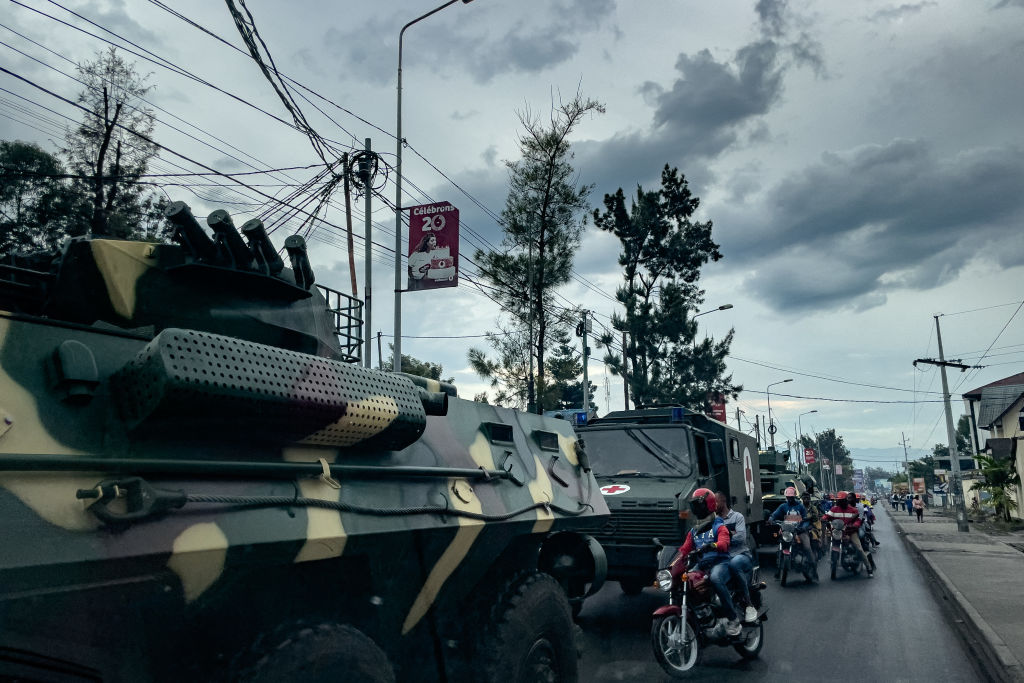The Southern African Development Community (SADC) on March 13 announced the termination and phased withdrawal of its military mission in the embattled eastern Democratic Republic of the Congo (DRC), where M23 rebels have gained ground.
The decision was foreshadowed by the late February repatriation of about 200 troops with the SADC Mission in the DRC (SAMIDRC). These Soldiers, from Malawi, South Africa and Tanzania, had been confined to their bases in M23-held territory and complained of a lack of food, supplies and medical care.
Analysts say the M23 outgunned and outmaneuvered the mission with high-tech weaponry. SAMIDRC troops were meant to fight alongside the Congolese Army and allied militias, but they “instead found a demotivated national force with limited combat readiness,” according to Paul-Simon Handy, the Institute for Security Studies’ (ISS) regional director for East Africa and representative to the African Union.
“SAMIDRC’s own capability constraints were also a major limiting factor,” Handy wrote recently for the ISS. “The lack of sustainable funding and equipment, particularly aerial power, and a weak road network undermined mandate implementation.”
SAMIDRC suffered from a lack support within the SADC regional bloc because few member states wanted to fund a mission that didn’t align with their national interests, according to Handy, who added that “strategic ambiguity” also undermined the force.
Critics said the SADC faced enormous challenges in the eastern DRC, where it had been deployed since December 2023. In recent months, the M23 has more than doubled its control of territory in North Kivu and South Kivu provinces, according to the United Nations Security Council.
The M23 seized the North Kivu city of Goma on January 27. The rebels said they would restart economic activities, but a month later banks in the city near Rwanda’s border still were closed. Thousands of people displaced by fighting were desperate for aid and shelter.
“Finding food has become a real challenge,” Jeannette Safari, a 26-year-old mother of one, told The Associated Press. Safari worked as a civil servant, but with government offices closed, she struggled to earn money. She planned to flee to Burundi. “Life is cheaper there (in Burundi), and even though I don’t know exactly how I’ll manage, I’ll make do,” she said.
After seizing the nearly abandoned North Kivu town of Sake in early February, the M23 on February 16 reportedly faced minimal resistance when it took control of Bukavu, the provincial capital. This was accomplished after attacking an airport near the city that housed Congolese forces. Ciaran Wrons-Passmann, managing director of the Ecumenical Network Central Africa in Berlin, said the airport’s capture was significant.
“This would cut off the entire east from the rest of the Democratic Republic of Congo and make it more difficult to supply the Congolese army with military equipment and troops,” Wrons-Passmann told Deutsche-Welle.
The rebels pushed deeper into Congolese territory on March 19 and captured the strategic North Kivu town of Walikale. This is the farthest west the M23 has advanced in its latest offensive, Reuters reported. This put the rebels within 400 kilometers of Kisangani, the country’s fourth-largest city.
On March 25, a day after members of the East African Community and SADC held talks aimed at reviving ceasefire initiatives, Congolese forces and the M23 engaged in heavy fighting in North Kivu’s Lake Edward, which straddles the border between the DRC and Uganda, and South Kivu, near Bukavu. This occurred after the M23 failed to withdraw from Walikale as it had promised.
Mawazo Christina and her nine children were among the 63,000 people who fled South Kivu to Burundi. Many of them had to cross the Congo River, the continent’s second largest, to do so.
“I was a businesswoman in South Kivu,” Christina told Al Jazeera. “We started seeing people getting killed everywhere in our area. Fighters would enter a house and slaughter young men. They raped women and our daughters. So, we all had to run. Those of us who survived all fled to Burundi.”
Since January 1, more than 100,000 refugees have crossed into neighboring countries, including 69,000 in Burundi, 29,000 in Uganda, and about 1,000 in Rwanda and Tanzania, according to the U.N. Refugee Agency. At least 7,000 people in eastern DRC have been killed in recent months.

